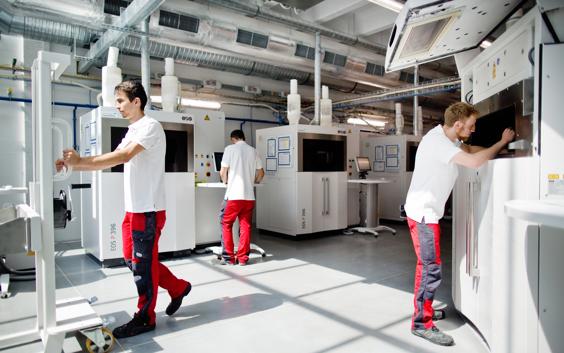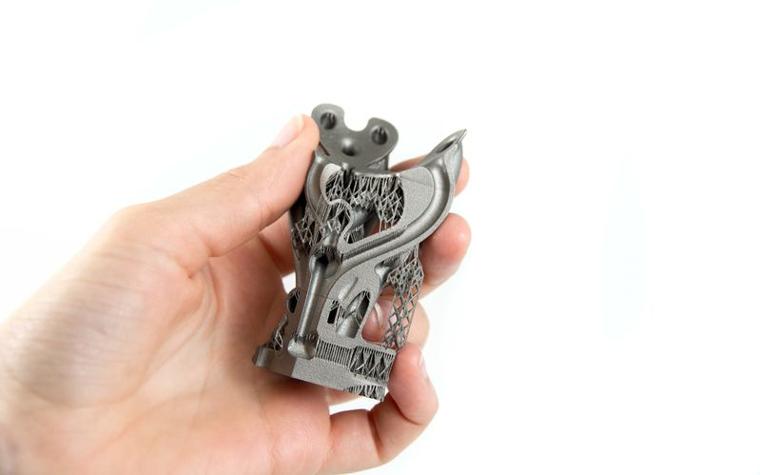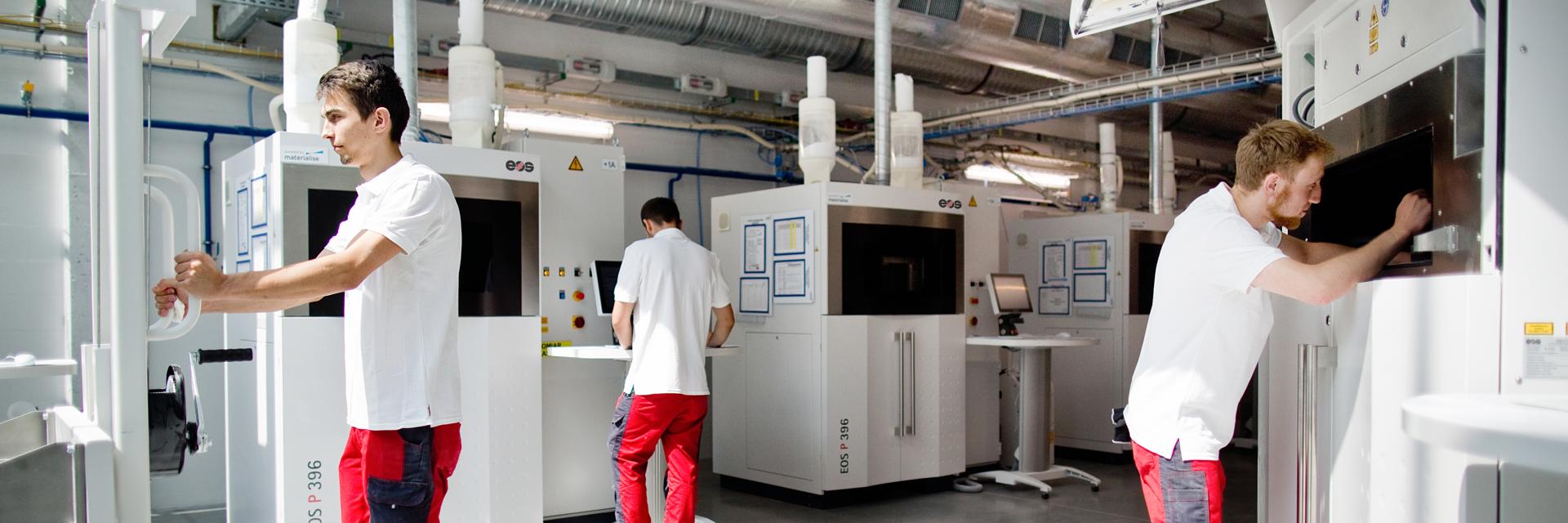EXPERT INSIGHT
The 3D Printing History in Three Stages and the Defining Role of Software

Stefaan Motte, Vice President and General Manager of the software department at Materialise, looks back at the history of 3D printing and highlights the three stages that this emerging technology has seen and how Materialise has been in the driver’s seat.
Making it work
Those that have been following the 3D printing industry since the early days know that it’s not a new technology. The first 3D printing machines were created around three decades ago when the technology still needed to prove itself. Our CEO Fried Vancraen bought his first printer in 1990 and realized that it was not that easy to produce high-quality parts, if any parts at all. A small team started writing the first lines of software code to make the printers bring designs to life. These lines of code marked the beginning of our Magics software, the current industry-standard software program used to prepare files for 3D printing.
And what was the first product that this small group of Belgian 3D printing enthusiasts tried to produce? A glass of beer of course. True story. Back then it was impossible to print the star-shaped form that is typical of Belgian beer glasses. This was the first challenge for our Magics software. We focused on making 3D printers usable, on enhancing the connection between software and printer. As new designs were created, such as complex and lightweight structures and bionic shapes, we developed software that translates these designs into a 3D-printed reality.
Making it meaningful
After we, as an industry, made it work, the question quickly became: how can we apply this new technology? In other words: which 3D printing applications are valuable, impactful and meaningful? 3D printing is not just about a difference in making. It’s about making a difference. The key to successfully adopting the technology is in identifying those applications that can truly benefit from 3D printing by offering process, design and manufacturing optimizations. Through co-creation, an in-depth collaboration process, we help companies identify meaningful applications that can generate real business growth.
An example of a very impactful application is hearing aids. When the hearing-aids industry discovered the transformative power of 3D printing, the change was fast and irreversible. Within 500 days, over 90% of hearing aids in the US made the switch from classic manufacturing to 3D printing. An entire industry was transformed in a matter of months. 3D printing also has a huge impact on the healthcare industry. We created the first customized surgical guides and customized surgical implants, changing people’s lives and helping researchers, engineers and clinicians achieve the desired patient outcomes. Today, we are using the blueprints of those revolutions to transform the eyewear industry. We are also seeing increased adoption of 3D printing among industrial manufacturing companies. Leading manufacturers in the automotive, aerospace and consumer goods industry turn to 3D printing as they recognize the design optimizations it creates in existing vertical applications and the potential to create new and significant business opportunities in new markets.


Making it worthwhile
So, we’ve proven that we can make it work. And development of new materials, better and faster machines and increased automation are continuously providing new impulses to the 3D printing industry. This has helped to position 3D printing not just as a prototyping technology but as a relevant alternative and complementary manufacturing technology for final products. We have also made the technology meaningful. We have identified and developed meaningful applications that can truly benefit from the transformative power of 3D Printing and we continue to identify new ones. Our next challenge is: can we make it worthwhile?
To make 3D printing worthwhile we need to scale our production and print more than one or one hundred parts. We need to enable mass manufacturing and make it economically viable, sustainable and profitable.
Software geared toward productivity
Today, leading players in the medical, aeronautics, and automotive industry are adopting 3D Printing to create end-use products. Our software allows them to scale their operations and increase their profitability and productivity by addressing the main cost drivers: manual labor, materials and machines. The reality of the 3D printing industry is that a lot of smaller and mid-sized companies are running their operations near break-even and are struggling to make a profit, especially for commodity products. This is where software plays a crucial role.
A perfect example is our e-Stage for Metal software, which automates the generation of support structures for metal AM. This software reduces data preparation time by 90%, cuts support removal time by 50% and allows a powder recuperation of nearly 100%. Another example is our automated nesting option for laser sintering builds. It allows 25% more parts to be built on one machine, leading to increased machine productivity. In addition, the automated nesting reduces the human labor from 8 hours to 40 minutes.


Besides automation, productivity can also be increased by using simulation software. Simulation helps operators to predict and analyze the behavior of a part during physical production by creating a virtual prototype, allowing them to optimize their build preparation and reduce the amount of costly reprints and fails. By applying simulation in our own production process, we were able to produce the same parts at the same quality 42% faster. Today, 10 to 15% of metal parts fail and need to be reprinted. Printing failed or unsuitable parts is very costly, especially for metal 3D printing.
Let’s add some numbers to that. Operating one machine for a year typically costs around US$400,000 to US$500,000. Our software for automated support generation can drive the cost down by 10% — or US$40,000. Adding simulation allows users to reduce the failure rate, again saving tens of thousands of dollars, depending on the geometries of parts. In total, software tools can reduce the overall cost of a machine by 10% or more. For a production facility running at a 5% margin — and not many are running on a 5% margin — that makes the difference between running at a loss and making a profit.
As more and more companies are adopting 3D printing as an alternative manufacturing technology, service bureaus are operating in a more cost-competitive environment than ever. As a result, they are looking for ways to scale their operations, increase productivity and reduce the overall cost. Software, and especially simulation software, will help them to drive down today’s primary cost drivers and scale up to meet the demands of tomorrow’s customers.
Share on:

Meet the author
Stefaan Motte
You might also like
Never miss a story like this. Get curated content delivered straight to your inbox.
